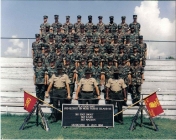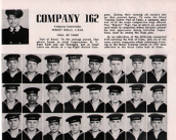Specialty Summary. Manages, supervises, and performs intelligence activities and functions including exploitation, development, and dissemination of multisensor geospatial intelligence products to support warfighting operations and other activities.
Duties and Responsibilities: Exploits and analyzes multisensor imagery and geospatial data and products in conjunction with all-source intelligence information. Determines type, function, status, location, significance of military facilities and activities, industrial installations, and surface transportation networks. Determines type, function, and location of military equipment including ground, air, naval, missile, and electronic orders of battle. Uses multisensor imagery to conduct comparative analysis. Analyzes terrain to determine trafficability, and identify landing zones and defensive fortifications. Analyzes structures of military and industrial installations to determine construction type and functionality. Determines present and future imagery collection requirements. Prepares damage assessment reports detailing structural damage and weapons effects. Uses multispectral imagery to analyze the likelihood of military and non-military activities and monitors counterinsurgency operations, through the use of full motion video, in direct support of special operations. Works closely with system collectors and collection managers to optimize capabilities to satisfy customer requirements and works closely with customers to assist in the strategy and submission of intelligence production requirements.
Operates imagery exploiting equipment including computer-assisted exploiting, geospatial analysis manipulation and automated database systems. Constructs queries and retrieves historical files to conduct comparative analysis. Uses automated exploitation equipment to prepare, review, and transmit intelligence reports. Uses softcopy imagery and geospatial data systems to exploit, perform mensuration, annotate, and disseminate GEOINT products.
Performs targeting functions to include target development, weaponeering, force application, execution planning and combat assessment. Maintains and uses geospatial databases, target materials, imagery and other intelligence products. Performs precise mensuration of multisensor imagery and geospatial data to determine geographic location, and vertical and horizontal measurements of objects and surrounding terrain. Uses maps, charts, geodetic products, and multisensor imagery to determine distance, azimuth, and location of targets.
Compiles imagery derived data and geospatial information into detailed target assessments. Uses information from other intelligence disciplines to analyze imagery and geospatial data. Prepares and conducts multisensor imagery and geospatial information derived intelligence briefings. Compiles and maintains target folders.
Coordinates, Unmanned Aerial System’s (UAS) tasking, processing, exploitation and dissemination. Works with UAS mission team to plan mission, maintain collection list, identify collection sequence and provide specific targets’ requirements. Assists in the identification of key features and determining optimal sensor selection and exploitation parameters and the assessment of weapons impact and effects.
Provides imagery exploitation support to Air Operations Center (AOC) processes, including Collection Management, Predictive Battlespace Awareness (PBA), Target Development, Time Sensitive Target Prosecution and Situational Awareness for the AOC.
Specialty Qualifications:
Knowledge. Knowledge is mandatory of: basic and advanced imagery interpretation principles, techniques, and procedures for imagery exploitation, reports, and presentations; Air Force, DoD, and national imagery intelligence collection systems and procedures; techniques of collating, analyzing, and evaluating imagery intelligence; use of national geospatial data, information and intelligence data systems and the maps, charts, grid systems, and interpreting equipment to solve geospatial intelligence problems; mosaic construction; intelligence reference materials; fundamental mensuration techniques; distribution of geospatial intelligence; requirements for, and sources and uses of target and geospatial intelligence data; production of geospatial related target materials; and security controls, classifications, markings, and handling restrictions.
Education. Completion of high school with courses in mathematics, advanced English, and computer applications is desirable for entry into this specialty.
Training. For award of AFSC 1N131X, completion of a basic Geospatial Intelligence Analyst Apprentice and applicable suffix course is mandatory.
Experience. The following experience is mandatory for award of the AFSC indicated:
1N151X. Qualification in and possession of AFSC 1N131X.
1N171X. Qualification in and possession of AFSC 1N151X. Also, experience training or supervising exploitation team activities in support of geospatial intelligence production.
1N191. Qualification in and possession of AFSC 1N171X. Also, managing, leading and supervising exploitation team or unit activities in support of geospatial intelligence production.
Other. The following are mandatory as indicated: For entry into this specialty: Normal color vision as defined in AFI 48-123, Medical Examinations and Standards. Stereoscopic acuity equivalent to depth perception standards for flying Class I or Class IA with or without correction according to AFI 48-123. Specialty requires routine access to Top Secret material or similar environment. Award and retention of AFSCs 1N1X1X and 1N000require completion of a current Single Scope Background Investigation (SSBI) according to AFI 31-501, Personnel Security Program Management. NOTE: Award of the 3-skill level without a completed SSBI is authorized provided an interim Top Secret security clearance has been granted according to AFI 31-501.




